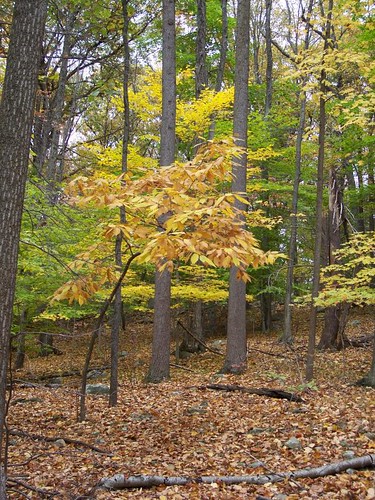
Chestnuts roasting on an open fire, a popular line from a holiday song, are a tradition that at one time seemed imperiled by the decreasing population of chestnut trees. (USDA photo)
“Chestnuts roasting on an open fire,” is a line from a song that conjures up fond holiday memories for some Americans. For others, the joy of roasting chestnuts has yet to be experienced. But the lack of American chestnuts could change in the coming years, thanks to some very dedicated people.
The U.S. Forest Service and its partners may be one step closer to restoring the American chestnut tree to parts of the mountains and forests of the southern United States. Since 2009, they planted close to 1,000 potentially-blight resistant American chestnut trees on national forests in North Carolina, Tennessee and Virginia.
To date, more than 80 percent of the American chestnut backcross hybrid saplings planted in the national forests have survived. Most of the trees are healthy, growing steadily and showing differing levels of resistance, a sign of encouragement to the hopeful community of people working to return the tree to its native range.
The once-young seedlings have reached an average height of 8 feet and have overcome what Stacy Clark, a Forest Service scientist at the agency’s Southern Research Station, calls “planting shock” by developing a strong root system and adapting to their new environment.
Before the introduction of the chestnut blight in the early 20th century, American chestnut trees dominated forests of the eastern United States. Known as the Redwood of the East, they often reached towering heights of 150 feet. At one time, one in every four hardwood trees in the East was an American chestnut, according to estimates.
By the 1950s, the blight had killed billions of trees and left the species virtually non-existent. Today, any chestnuts found in the Eastern forests never grow beyond a few feet tall and rarely flower. Chestnut trees have reached a “genetic dead-end” in the United States because of their inability to reproduce.
“One level of success is to develop a tree that will survive long enough to naturally pollinate and reproduce,” said Bryan Burhans, president of The American Chestnut Foundation. “The Forest Service and its scientists work with the foundation on a number of different levels, in the field and with planning and monitoring. There are all kinds of ways that we have worked together.”
Burhans says he is optimistic about the future of the American chestnut hybrid, but admits that the trees planted in national forests face challenges in the coming years. As the trees continue to mature, their blight-resistance will be put to the test.
Meanwhile, Clark, foundation scientists and others will continue to look for conditions and other useful information that will help to return chestnuts to the East.
“There is still a lot to learn about these trees,” said Clark. “And there is a lot more work to be done in restoring the American chestnut.”
With ongoing refinement of the hybrid trees, collaboration with partners and with hope, widespread restoration of the American chestnut may become a reality in the next 100 years.
It may also offer opportunity for a favorite holiday pastime to re-emerge as part of celebrating the season with song and sustenance.

A University of Tennessee research technician measures a chestnut tree planted in 2011. (U.S. Forest Service)
No comments:
Post a Comment
Note: Only a member of this blog may post a comment.